Can the Porsche 718 Cayman S, with a sublime chassis but two fewer cylinders, cut it against the six-cylinder BMW M2 and Jaguar F-Type?
Oh, for heaven’s sake. This was supposed to be a foregone conclusion. Porsche 718 Cayman S arrives, there’s barely any competition, wins. Ta-da. Best sports car in the world beats other not-best-sportscars-of-the-world. The end.
But no. I’ve just driven it and two alternatives around bits of MIRA proving ground, around a drifty corner, down the Fosse Way where the surface is rubbish, around some road corners where the surface is all right, and on some dual carriageways and motorways to the New Forest. And actually, it’s not a very clear-cut decision at all. So I’m sorry, but we’re just going to have to get on with it.
To the Porsche, then. Ah, the Porsche. It’s the new car, hence the test, and it’s here in £48,834 2.5-litre S guise, one of two Cayman forms at the moment. The S is the more powerful one. Its 2.5-litre engine has only four cylinders – you might have heard – instead of the six it used to have, although it makes a lot more power than the previous 3.4-litre engine used to while, on paper, emitting and consuming less. But in practice, I doubt that there’s a lot in it.
It has 345bhp instead of 320bhp, which is good, apparently, but it also now has a turbocharger and two fewer cylinders, which is bad, definitely – from an aural and response perspective, any rate. But we’ll come to that.

It’s a two-seat, mid-engined coupé still, and the construction is much the same, but every panel apart from a couple of bits around the roof were renewed in the transition from Cayman S to 718 Cayman S. The front suspension is adapted from the Porsche 911 Turbo, the rear suspension has bits of previous-generation Cayman GT4, the steering is 10% faster than the old Cayman’s was and the geometry, springing and damping are all new for the seven-eighteen.
Inside, there aren’t vast differences between Caymans old and new. You sit relatively low, but with reasonable visibility that now includes, pleasingly, a view of the tops of each wing, which I don’t remember having before. It’s quite reminiscent of 911s of old – a cute touch.
Interior materials are well chosen, but it’s largely a business-like cabin. Porsche hasn’t gone out of its way to wow you with soft surfaces or embellishments here. It’s just a solidly constructed, effective cabin, with switches where you’d hope they’d be and a new infotainment system that’s still in danger – as is the gearlever – from latte overspill, given that the right-hand cupholder overhangs the centre console. Hashtag first world problems, etc.
To the £53,565 Jaguar F-Type, then, because frankly its interior tries to do the opposite of the Porsche’s. It sets out to wow and excite. It feels shrink-wrapped around you, which is partly because the chassis’s aluminium construction eats into interior space regardless of the fact that this a long, wide car. It’s snug, head room is less generous than in the other pair and even leg room can be at a premium if you’re over 6ft tall.
At least there are only two pedals to worry about, though, what with this V6 being an auto – there’s a manual, too, but an auto suits the F-Type, as we’ll discover – so there’s a smallish stick on the centre console and a reasonable amount of space around it. Materials have been chosen for their appearance as much as their feel and it’s an altogether flashier, showier cabin than the Porsche’s.

There’s nothing wrong with that, though, and it’s designed sweetly, with the driver getting all of the important things angled their way, while the passenger’s side is cordoned off by a Jesus handle. I like the seats. When I ran an F-Type as a long-termer, they used to induce some back stiffness on long journeys, but I don’t find it a problem today.
Like the Porsche, the Jaguar has two seats only but, unlike the Porsche, it has a six-cylinder engine, which happens to be placed at the front. It’s a V6 – 3.0 litres – and its artificial aspiration is via a supercharger rather than turbocharger. Still, it’s not as powerful as the 718, making 335bhp, which has to propel the F-Type’s not inconsiderable 1567kg. The Porsche’s extra 10bhp has to move just 1430kg, which leaves it the lightest car here by a margin. Blame those six-cylinder engines and the lengths of the propshafts on the other two.
At least the BMW has the excuse of having four seats, hence it weighs 1570kg. Granted, they’re not the biggest rear chairs in the world, but you wouldn’t expect them to be. The £44,070 M2 is a compact car, after all.
That it’s a four-seater could make it feel the least special here, but the exterior design is horny enough to excite our photographers, and there are sufficient interior highlights – or lowlights, given lots of purposeful dark material choices – that serve to add to the M2’s aggression.
I’ll be honest: I love this car. When Porsche launched the Cayman GT4, it said it was old-school but not old-fashioned. The M2 feels drawn from the same rule book. BMW has taken its smallest rear-wheeldrive car and dropped in a brawny turbocharged 3.0-litre straight six engine with 365bhp, while the rest of the car is much simpler than larger M cars. Dampers are non-adjustable in their firmness.

There’s no carbonfibre roof or any of your fancy composite nonsense. Braking is by cast iron discs; there’s no carbon-ceramic option, as there is (and as fitted) to our Porsche test car. Nope. There’s just a stonking engine driving the rear wheels via a limitedslip differential, here through a six-speed manual gearbox, too.
Which means, unusually, all three of these coupés can be had with a manual transmission. Of them, the Cayman’s is the sharpest, sitting alongside a relatively light but accurate and responsive steering rack and superbly weighted and placed pedals. The optional fixedback seats are belting at MIRA, putting you snugly into a straight driving position, although their novelty wears off after a couple of hours on the motorway.
Dynamically, this Cayman is everything you’d hope it would be. When I first drove one a few weeks ago, I wondered what the ideal specification would be, and this isn’t far away. The important boxes have been ticked: adaptive dampers, limited-slip differential, carbon-ceramic brakes. And equally important boxes go unticked: PDK dual-clutch transmission, overly burdened steering wheel.
I’d have been tempted to stay an inch or two smaller on the wheel front. The 20s on this test car look great but I wonder if, on smaller rubber, a brilliant dynamic car would have been even better. And the Porsche is brilliant, no doubt. The whole reason we started this test at MIRA was so it could pass through the road test mill and, without wanting to reveal too many spoilers, you’re looking at a massively capable car that’ll lap a dry circuit nearly as quickly as a Cayman GT4 and cover 0-60mph in 4.8sec, but whose composure on a poor B-road gives it tremendous breadth of abilities.
The 718 comes alive at the more dynamic end of the scale, mind. We didn’t call it the best sports car in the world for nowt. On a circuit, although I don’t want to dwell there too long, it’s terrific: agile, grippy, with a little understeer at first but enough power to get through it. When it slides, it lets go quite quickly and, although adjustable and entertaining, it’s not a natural slide machine because its engine is in its middle.

Shall we talk about its engine? I suppose we should, because we would have were this a test set three months ago, where I’d tell you that it had a rev-happy, sonorous engine note to die for. Today, dear reader, it does not.
It’s not like there’s a lot wrong with the power delivery. On full throttle from low revs, there’s some sluggishness until the needle passes 2500rpm, but then it’ll pull cleanly to the 7500rpm redline, although the last 1000rpm or so hardly seem worth having.
And that’s where the shame lies, because every last rev in the old Cayman was worth holding on to. And although today’s engine delivers more, and earlier, and doubtless delivers more torque to the wheels through more of the rev range, thereby making it much, much faster in plain terms, this is a sports car, and efficiency be damned. An engine is meant to excite as well as propel.
Jaguar, to its credit, knows this. All of its engines of more than four cylinders sound good, even what is here its least powerful V6. Because it’s supercharged, not turbocharged, there’s no lag at low revs, just a growing urge as it skips around the rev counter with a hollow bark.
The F-Type isn’t as fast as the Porsche; nor is it as dynamically adept. Its engine is in the front and the car is heavier, so naturally it is less agile. But that doesn’t really matter. In extremes, there’s very little understeer and a fine, natural handling balance.
The Jaguar is softer than the Porsche in either of its two chassis modes, but beneath the underlying compliance is (a) some fidget at low speeds and (b) a great ability to soak up bumps once the chassis is already loaded. Jaguar went all out to make a sports car, it said, when it first produced the F-Type, but it looks and feels for all the world like a GT car in this company. And there is, on these kinds of journeys, precisely nothing wrong with that, particularly when it steers so smoothly and sweetly and sounds so good.

Which leaves just the BMW, to do what small BMW cars do best. The littlest M is frequently the best at the minute, it seems. Yes, there’s a 3.0-litre straight six engine in the front, which means that agility isn’t up on Porsche terms, but again, let’s not forget it has four seats. It ain’t going to be, and that’s okay.
As a result, its nose wants more settling on the way in to a fast corner to stop it from pushing onwards, and there’s a sometimes surprising amount of grip at the rear. The M2 is not the natural hooligan you’d expect, unless deliberately provoked. Do that, though, and it adopts a terrifically easy slide, but it’s not its only trick.
On poor roads, there’s more vertical movement and a harsher ride than the other two cars here, but it’s well within the realms of acceptable. The steering is quite abrupt off the straight-ahead, while the squidgy wheel rim and some rubberiness to the gearshift mean that it feels less precise, overall, than the Porsche.
But its single-turbo engine sounds terrific and seems to have less lag than the Porsche. Although the BMW corners with poise and ability, there’s ample torque to adjust the line without getting daft.
Is it a sports car? Perhaps not. Bruising, confident sports coupé that’s more than the sum of its parts, yes, and as removed from the sports car ethos as the Jaguar is in a different direction.
Which means no obvious winner, because all three entertain in their own way and impress in their own way, pretty much equally. On a solitary long journey, I’d take the Jaguar. To live with easily but be entertained daily, I’d take the M2.
But the all-round sports car remains, by a smaller margin than I’d have expected, the Cayman. Best chassis in the world has to count for something, after all, and here it’s the nod over the other two.

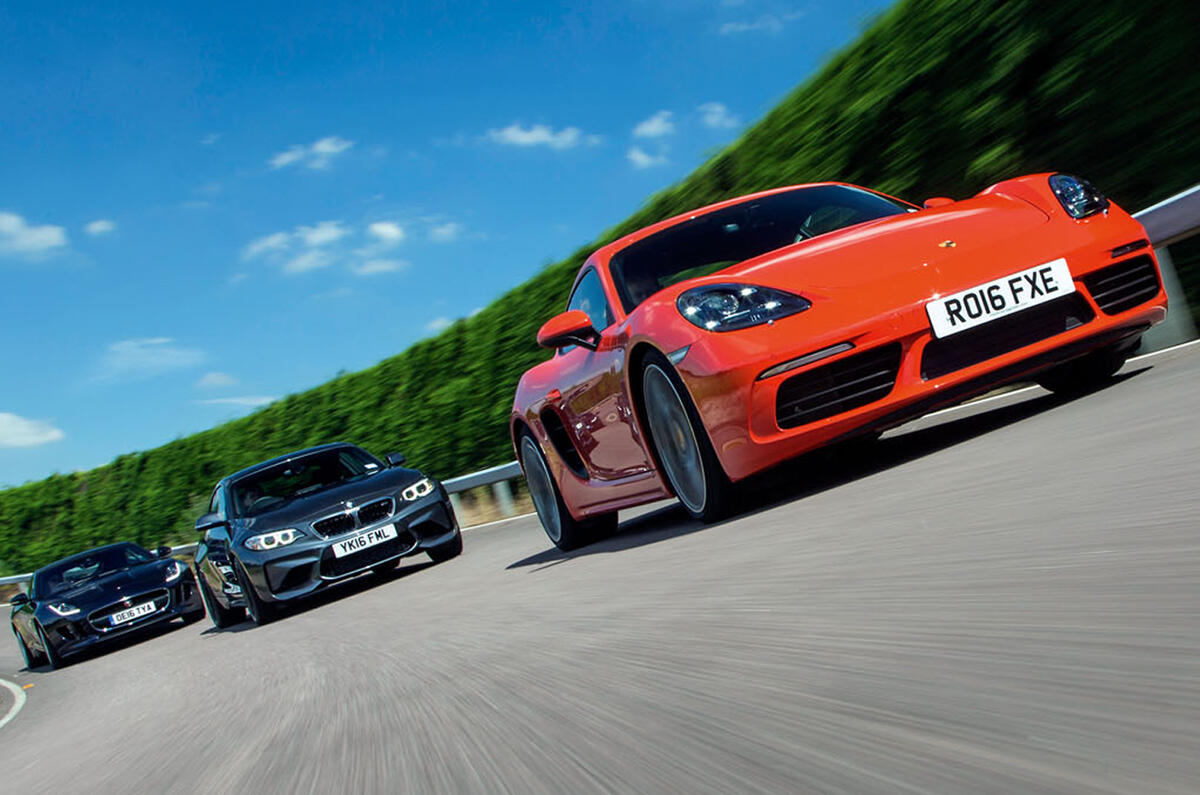
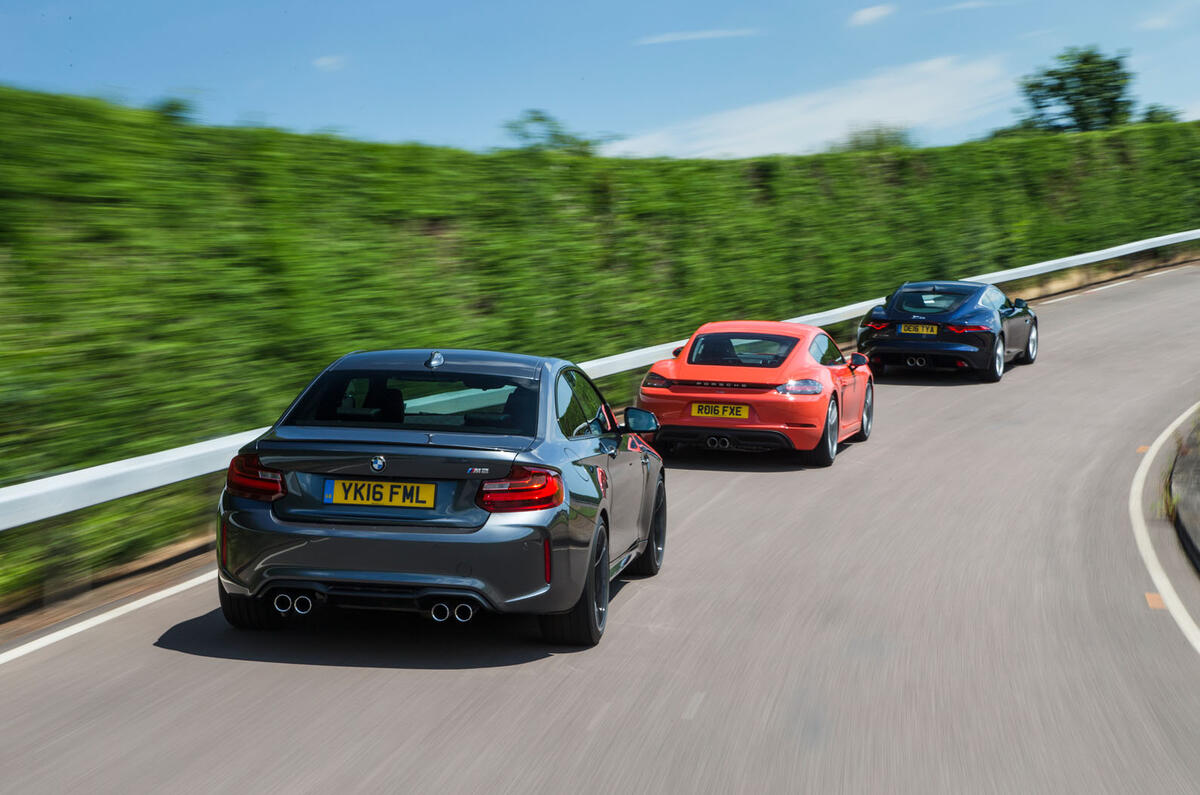
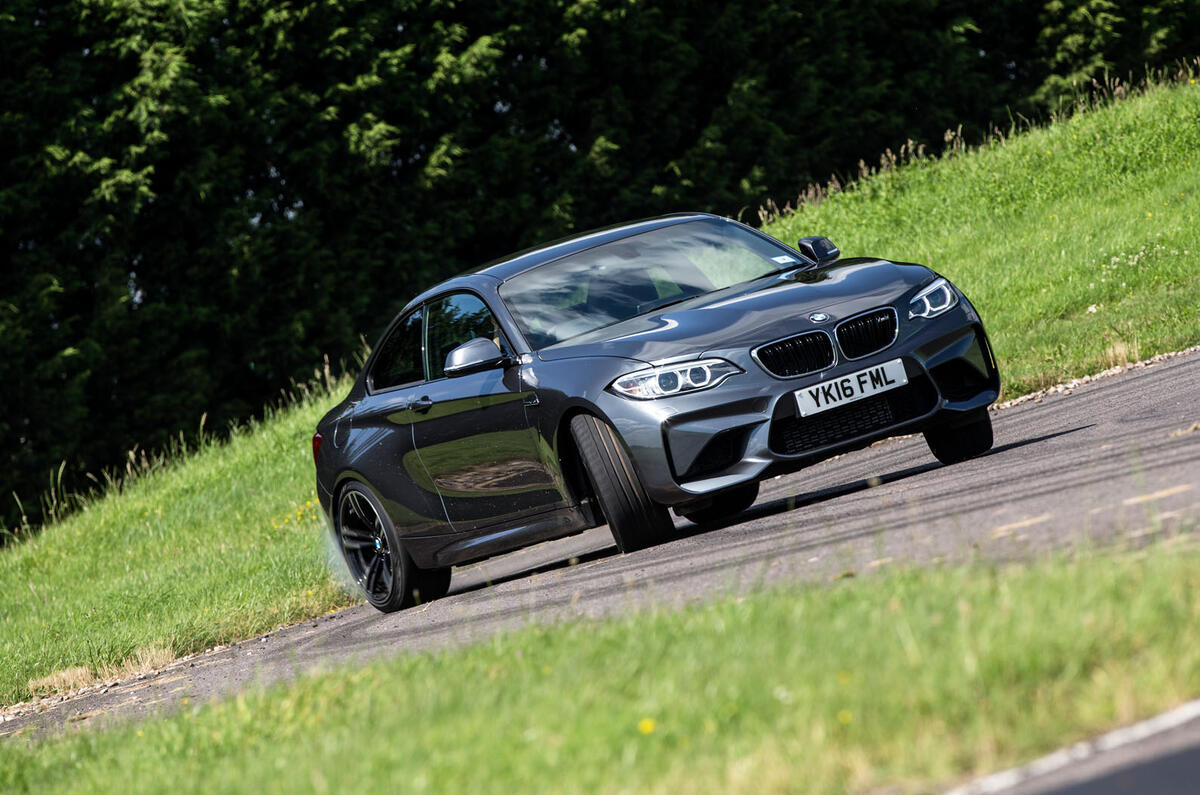
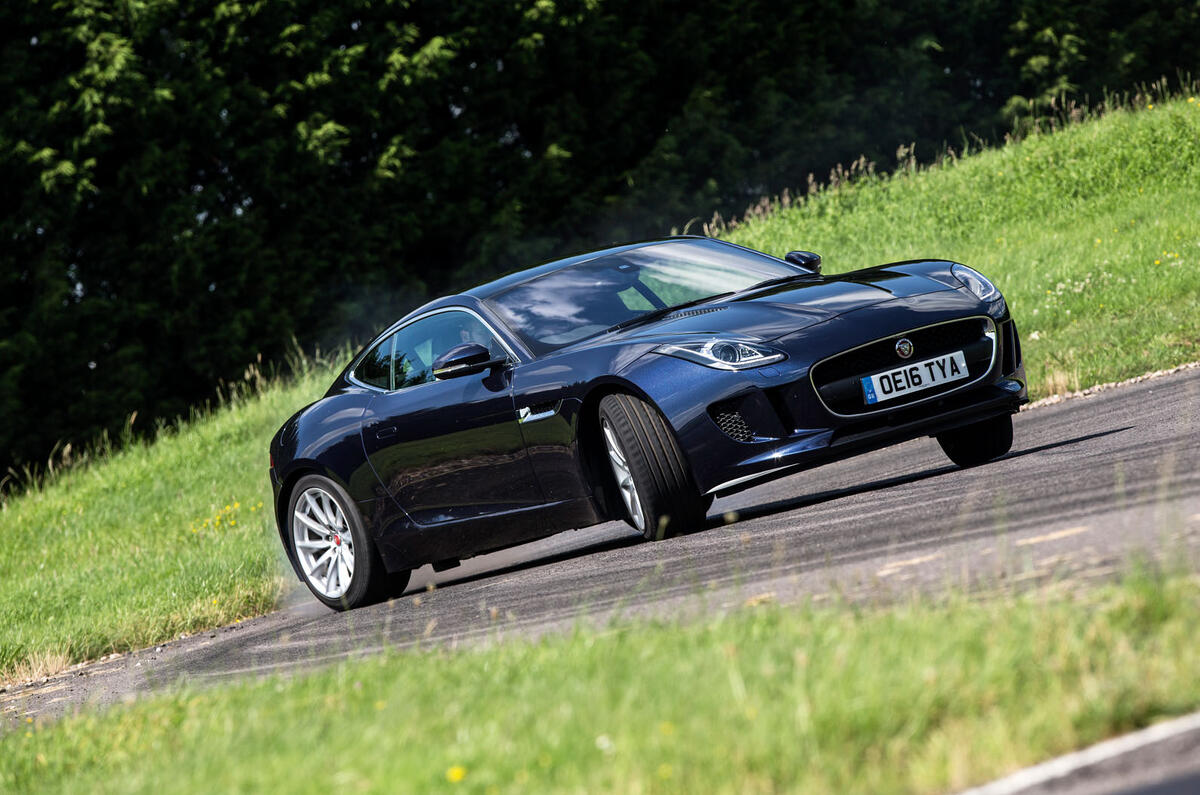
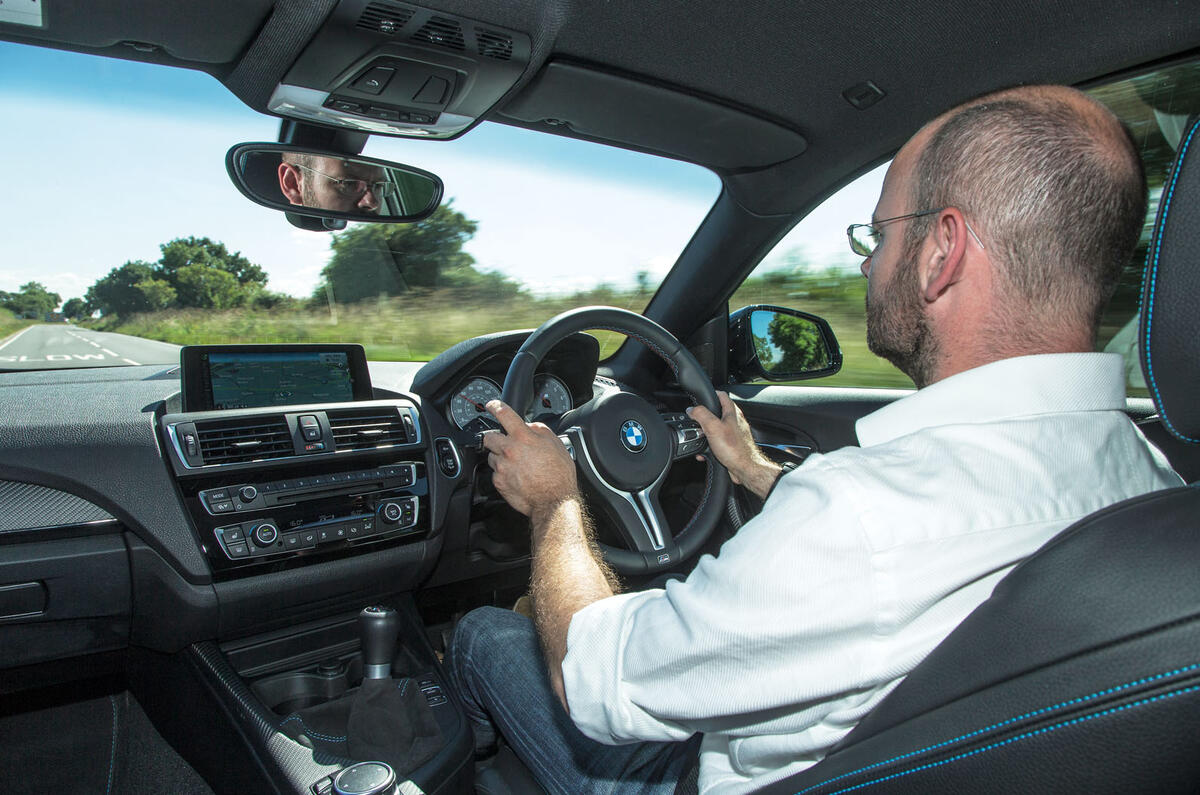
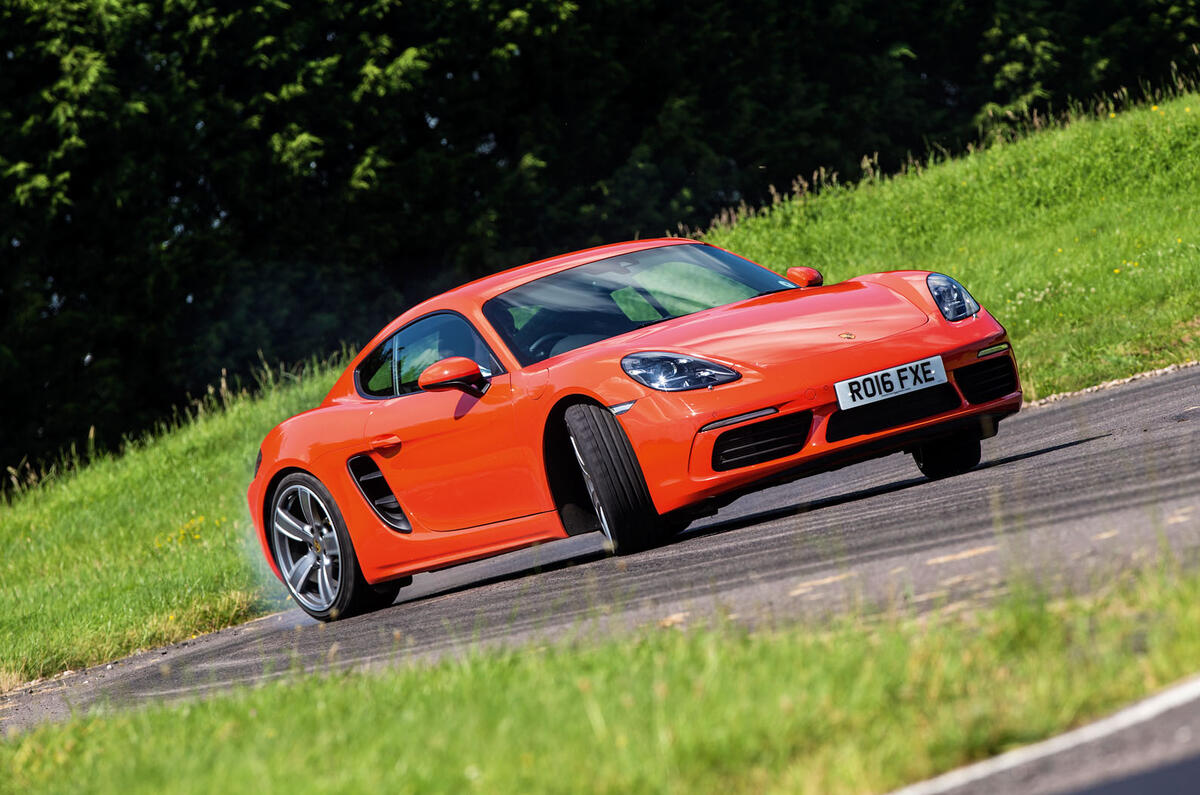
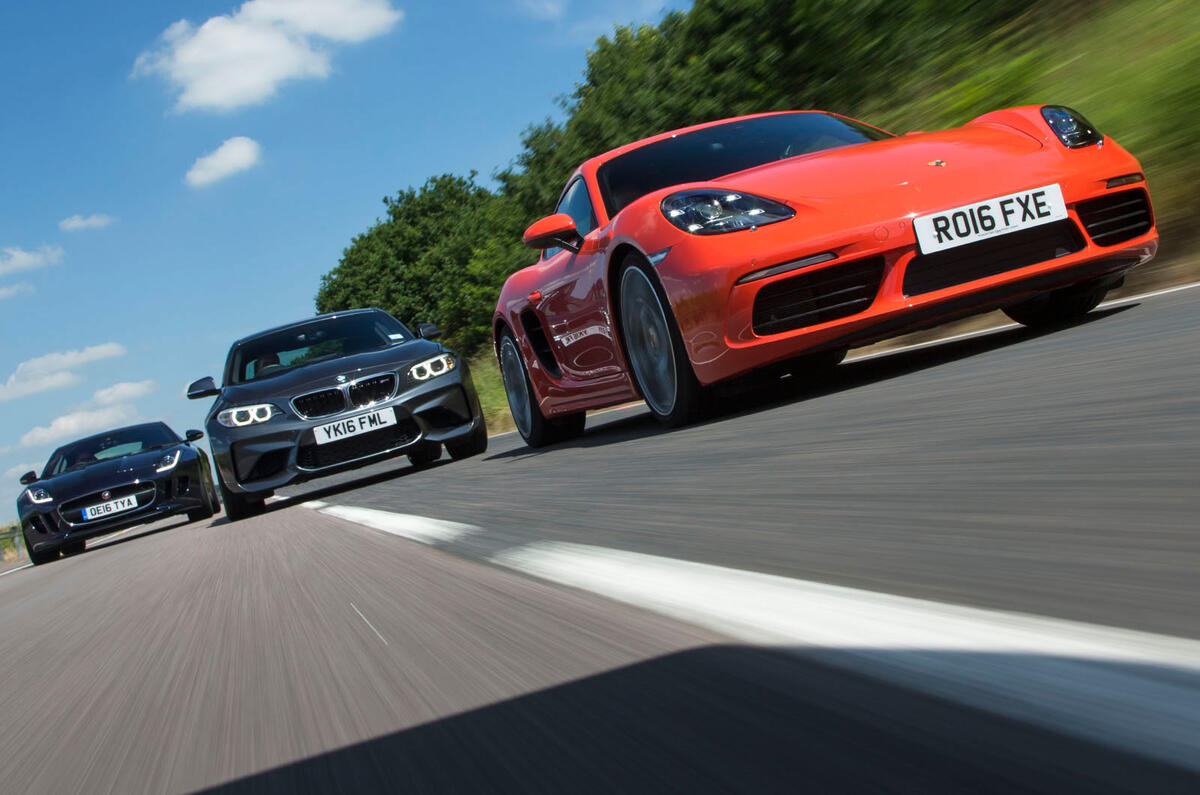
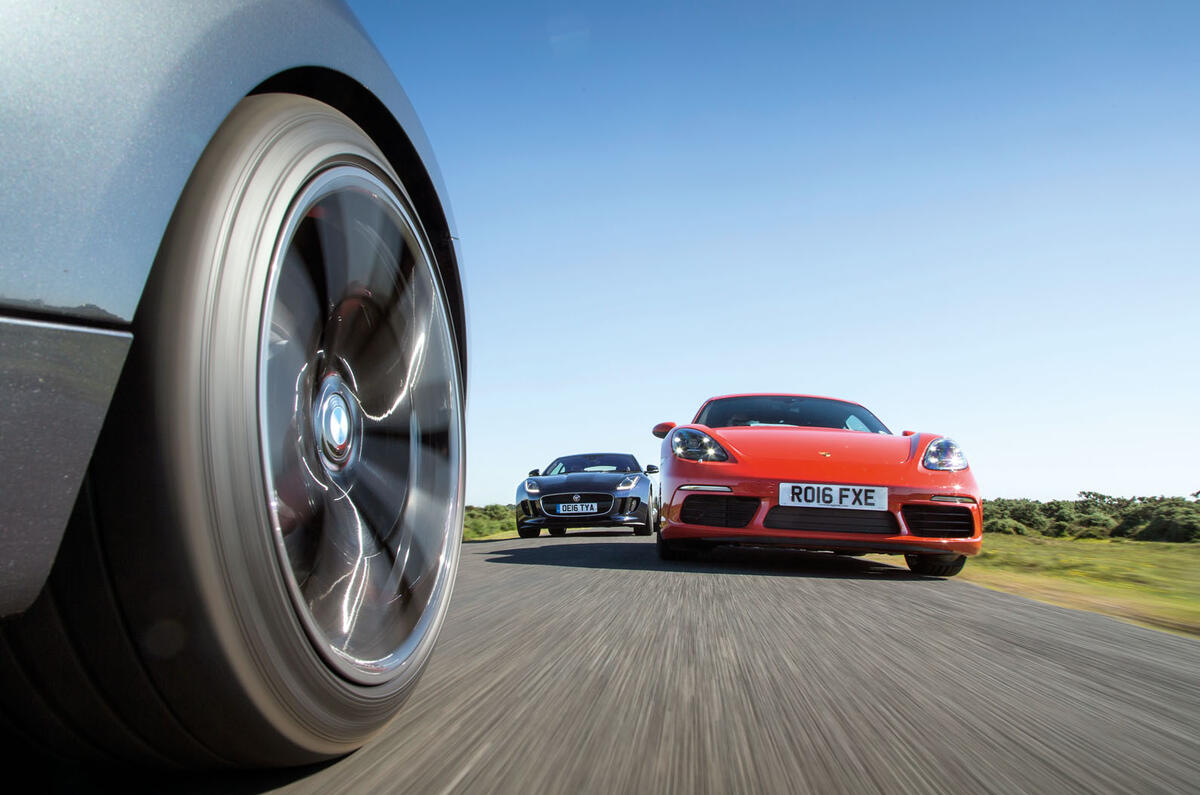
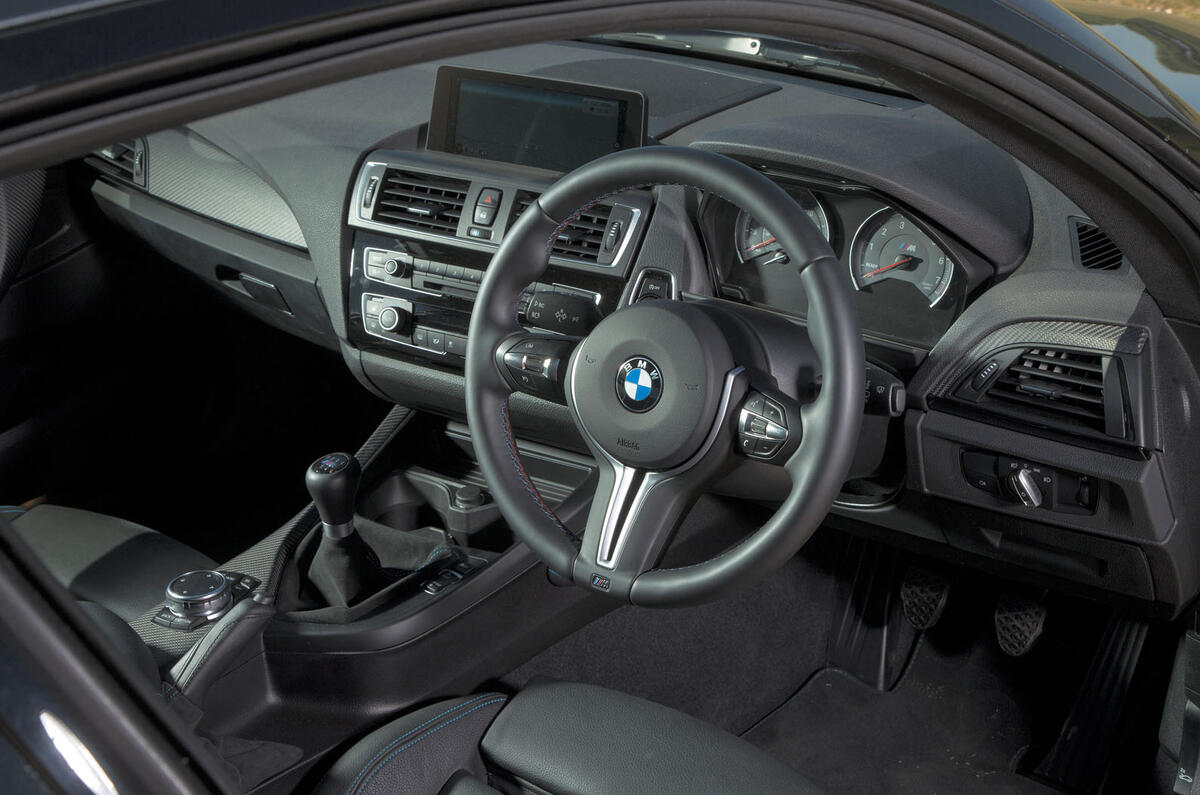
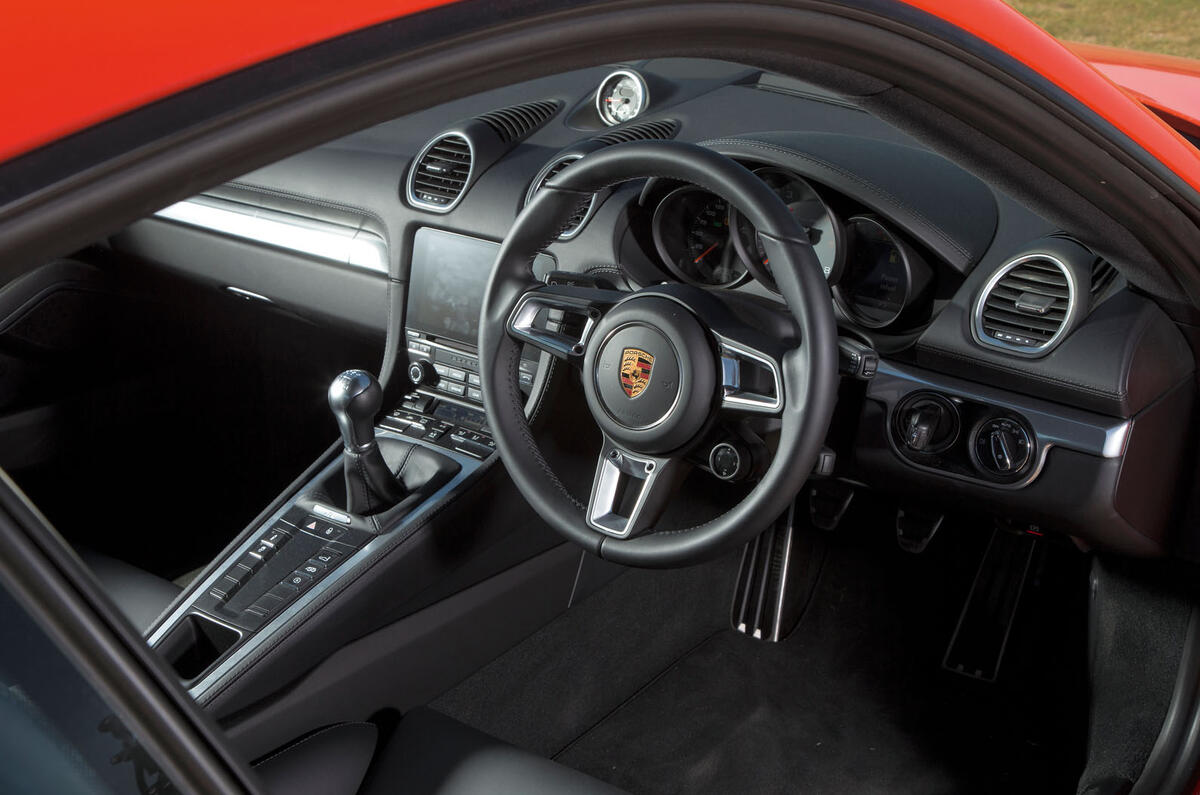

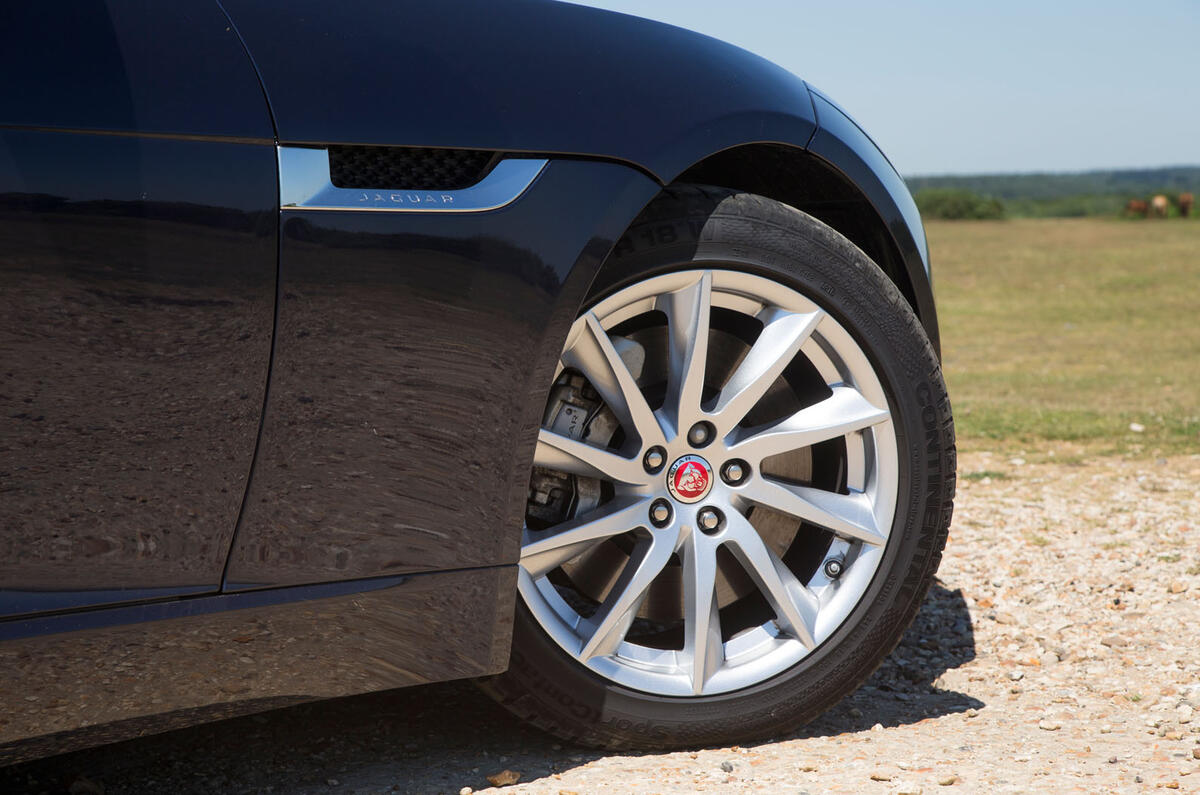
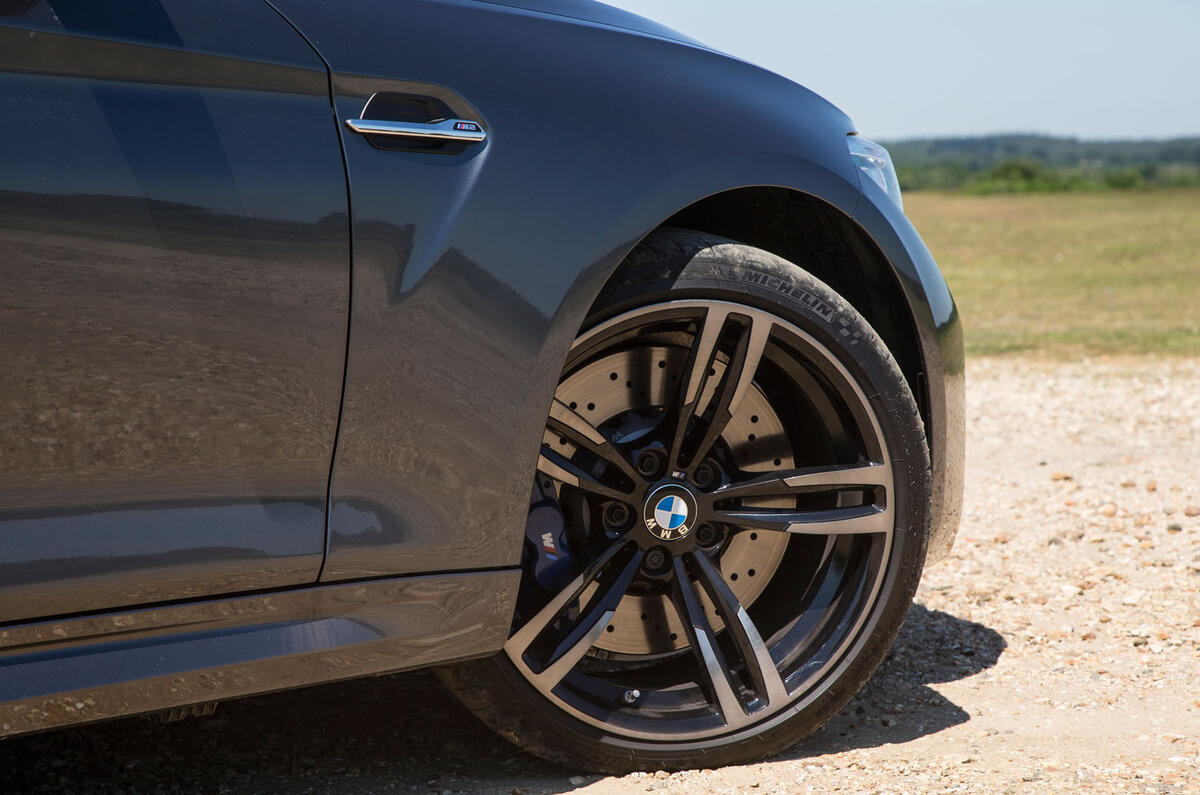
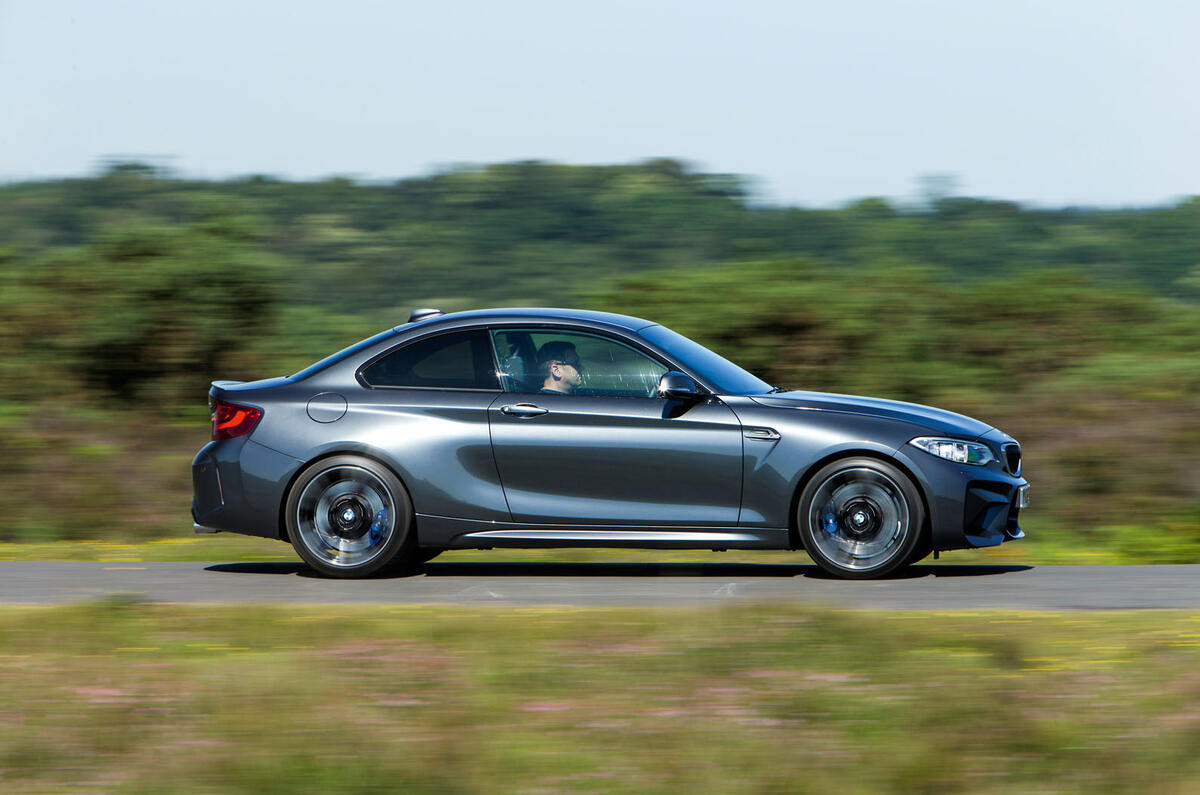
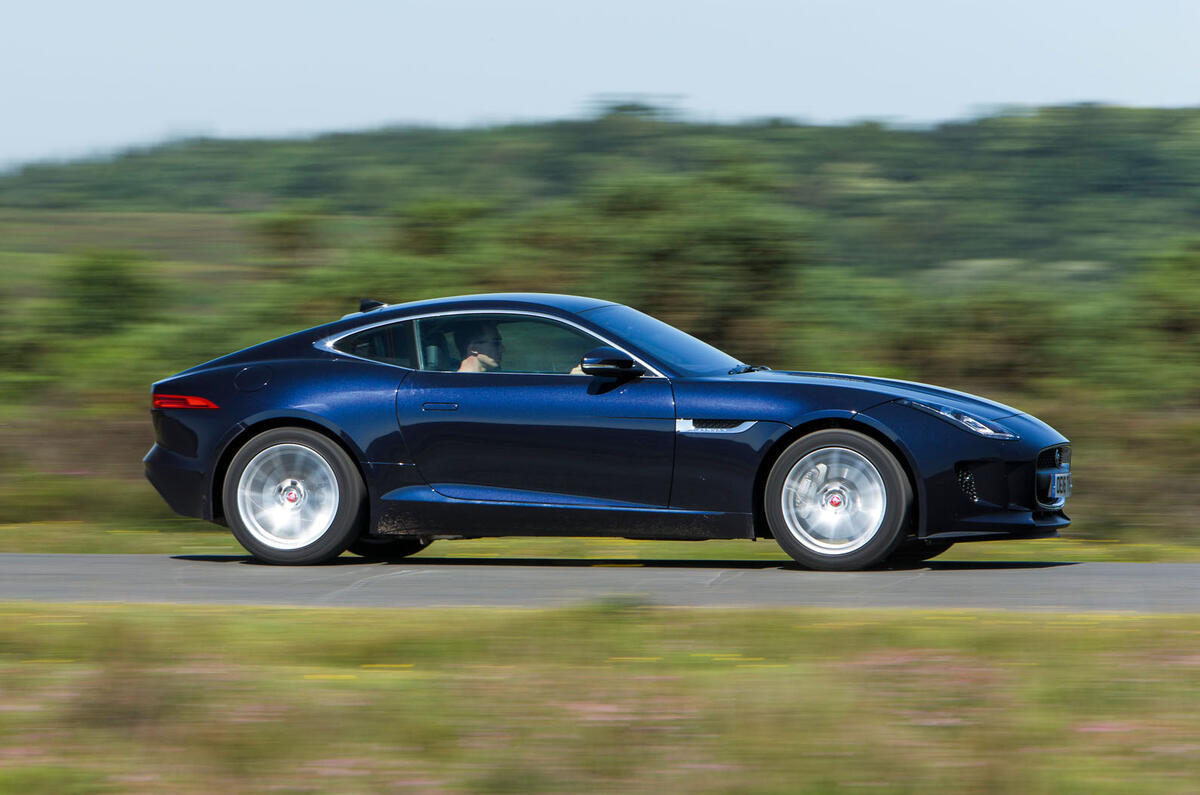
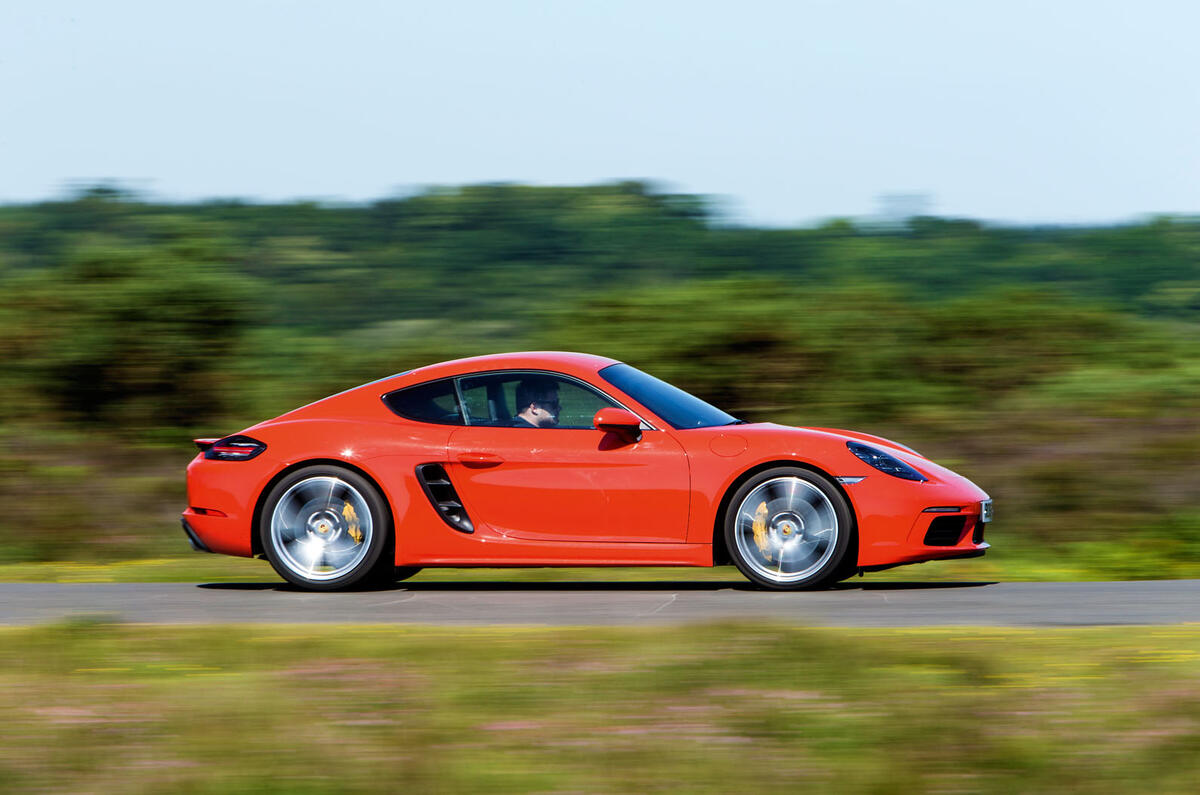
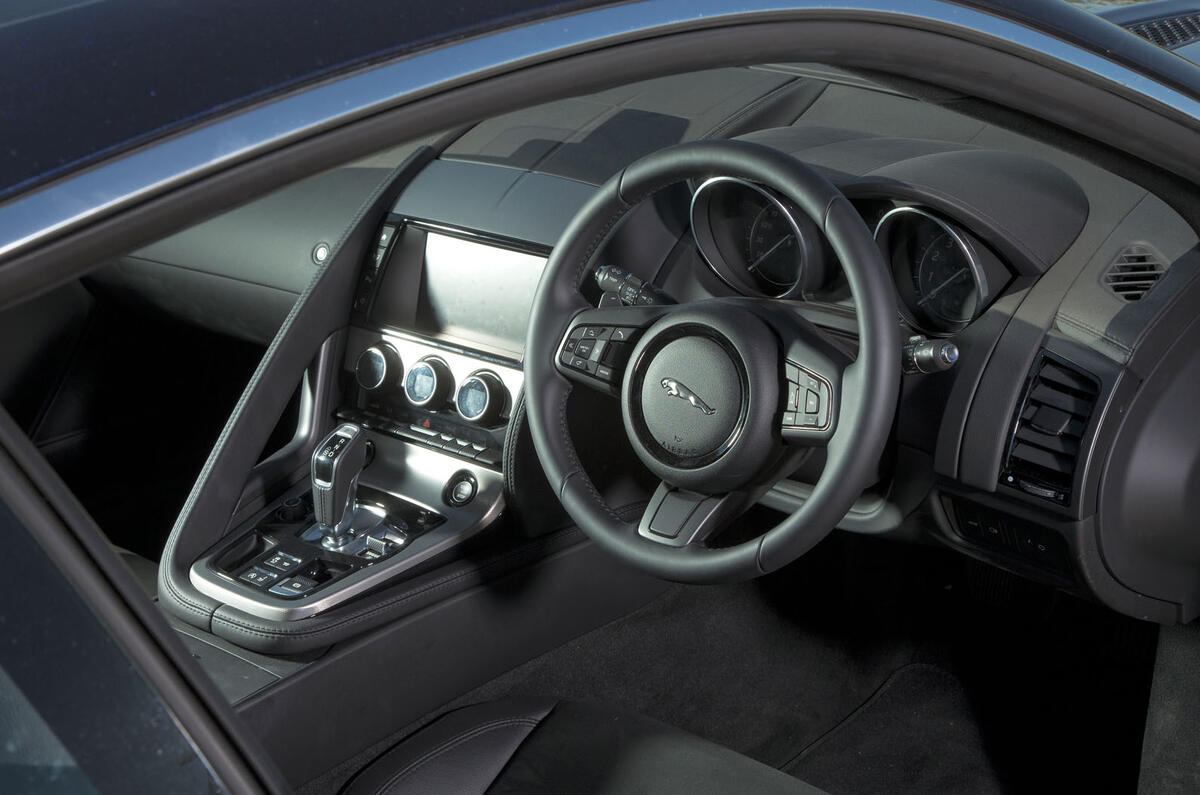
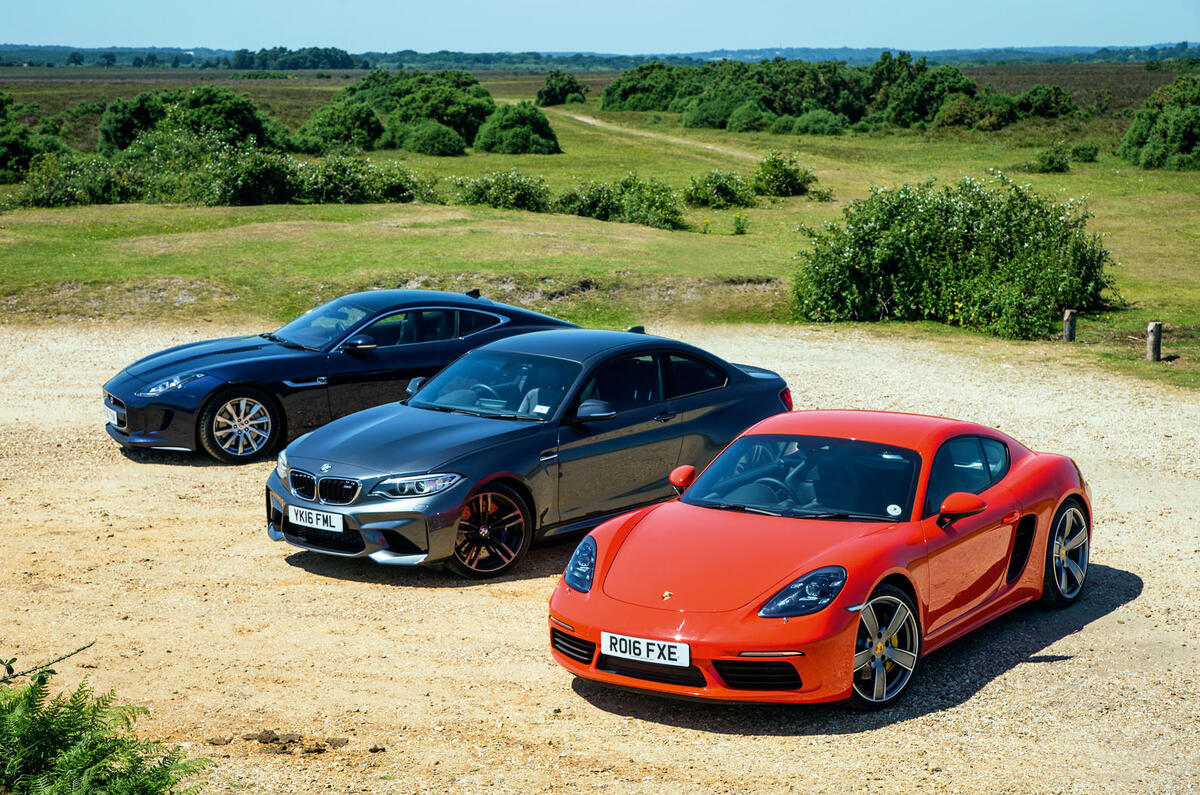

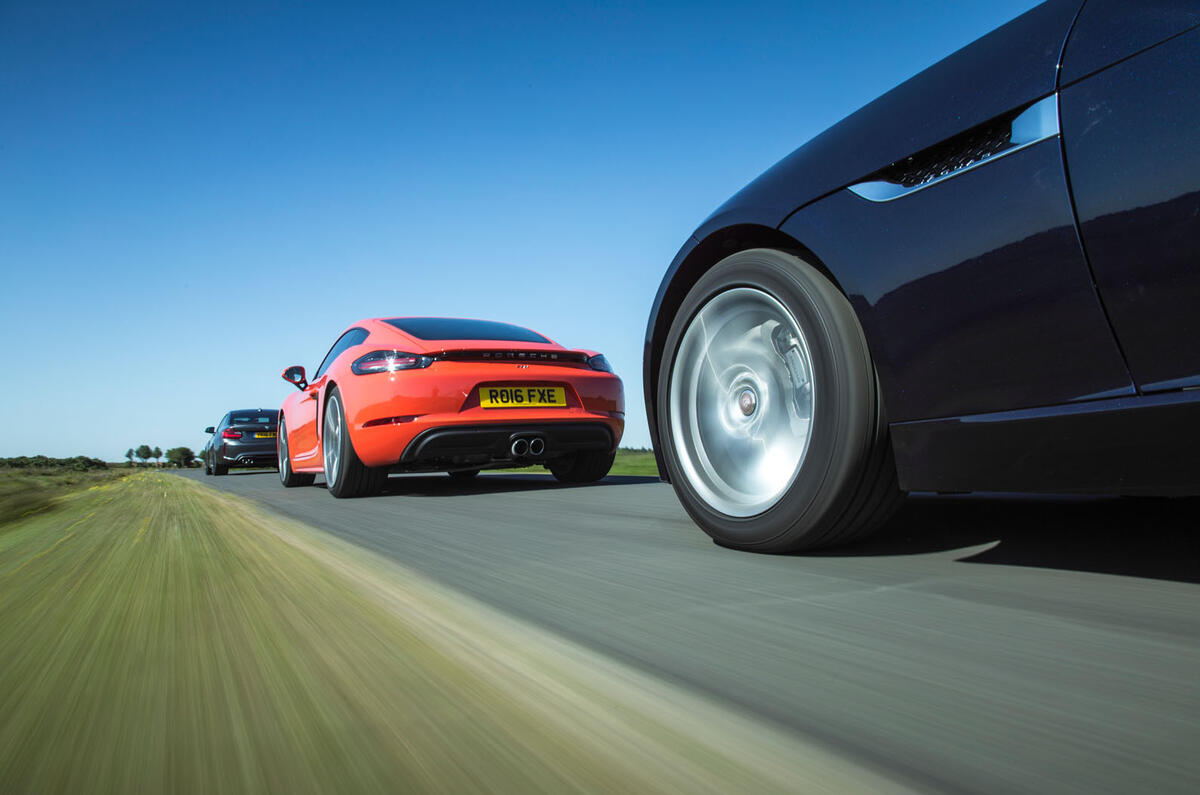
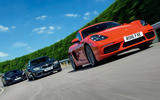
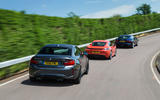
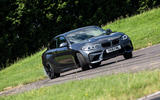
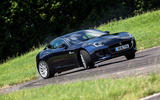
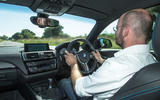
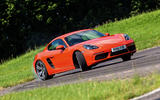
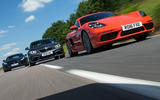
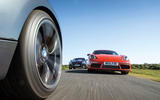
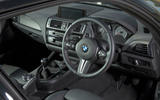
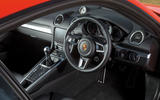
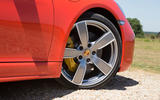
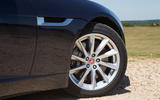
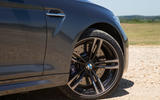
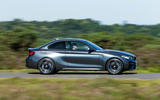
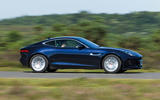
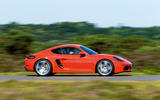
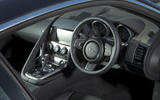
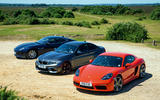
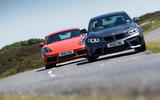
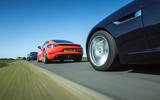





Join the debate
Add your comment
It would appear that the old flat six is the same economy as the
These boxy fours should be way less as the perceived value of the cars now is well under £30k.
could just be the spec of
michael knight wrote:
Perhaps, although I see it as far more at home amongst this company than in the 911-territory that its priced in.
A personal perspective
I was seduced by the great looks and glowing UK reviews of the F-type convertible so, earlier this year, I sold my (987 generation) Boxster and bought the Jaguar. I kept it for two months before accepting my mistake and trading it in for a new (981 generation) Boxster. My problems with the F-type were both practical and subjective. Practically, it was about 150mm wider than the Boxster and simply felt too wide to be easily hustled along the rural B-roads around me. I fully expected to lose a door mirror or worse to oncoming tractors or Transit vans. It also had 20" wheels, which were incredibly vulnerable to kerbing when negotiating traffic in the narrow streets of the small market town where I live. Subjectively, although it was seriously fast, I found it to be pretty uninvolving when driving it at "normal" (i.e. legal!) speeds. To me, it didn't feel at all like a sports car. I think JLR's decision to pitch it into a perceived niche half way between the Boxster and 911 has left the F-type with a bit of an identity crisis; too big and unwieldy to be a true sports car, too demanding a drive to be a relaxed grand tourer (and it has far too small a boot for the latter role). The Boxster, on the other hand, is a sports car in that it always feels "special", even at 30mph. It's also far more practical, with its two boot spaces. That said, the older 987 generation car was, at the margin, a better drive than the 981 due to its extraordinary visceral steering. The electric power steering on the 981 feels slightly synthetic and less communicative by comparison. It's still, IMHO, a better sports car than the F-type.
Daniel Joseph wrote:
interesting insight - you're right about the packaging, it's 911-wide and has a very high beltline which makes it feel even more difficult to judge its dimensions. I guess Jags have always been more about the grace and pace rather than real sporting feel. But again, the extensive use of Aluminium (like the XE) results in a heavier car than its rivals. Is the Al JLR are buying a duff batch from China?!
Where goeth the Cayman ?
Emissions game
Regarding Porsche's price and development cost